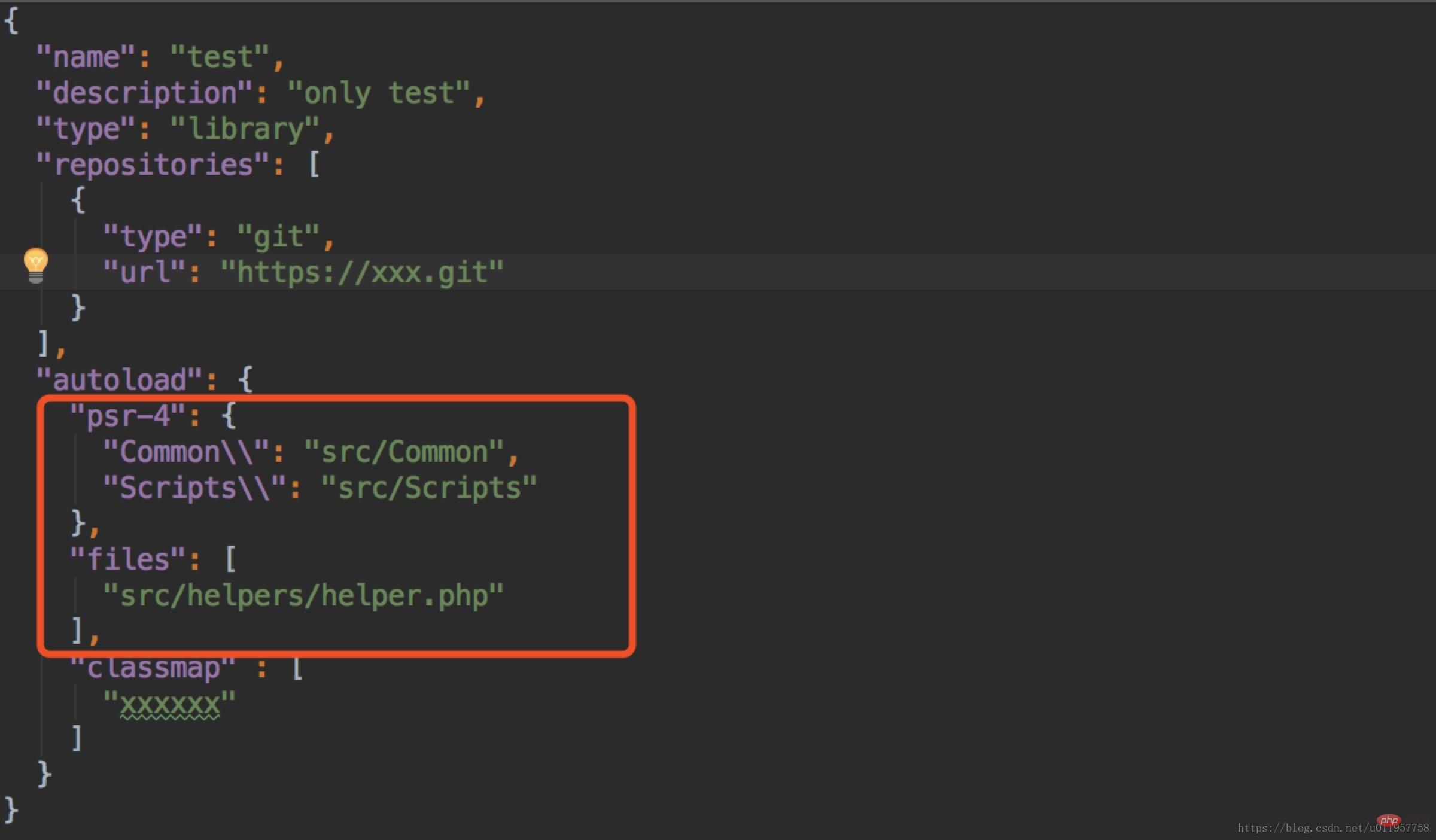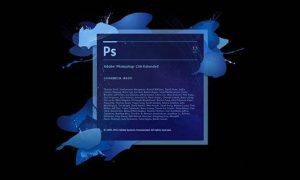下面由composer教程栏目给大家由浅入深的介绍composer自动加载机制,希望对需要的朋友有所帮助!

前言
由于对于composer自动加载机制的记忆只剩下了"spl_auto???"和"根据命名空间来推导出文件路径"这两个了。。。还是残缺的。。
本想网上收藏一篇详解,奈何,没发现符合我觉得的"由浅入深"文章。所以有了这篇笔记。
以下知识点即将赶来:1.了解一下spl_autoload_register2.composer update发生的故事3.追踪一下composer的自动加载
正文
1.了解一下spl_autoload_register
首先查一下php官方手册: (偷懒可以只看红色部分即可)
(偷懒可以只看红色部分即可)
是不是看着一知半解?来用白话文来翻译一下:
我们new一个类的话,必须先require或者include类的文件,如果没有加载进来则会报错。这产生一个问题:那这样的话文件的头部到处都是requies和include,明显不符合程序员必须"偷懒"尿性。为了不需要require或者include类文件也能正常的new一个类,出现了自动加载机制。spl_autoload_register这个函数就专门干这个事的。
从截图得知,此函数有三个参数:
| 参数 | 详解 |
|---|---|
| autoload_function | 这里填的是一个***"函数"的名称***,字符串或者数组,这个函数的功能就是把需要new的文件require或者include尽量,避免new的时候报错。简单的说就是要你封装一个***自动加载文件的函数*** |
| throw | 当自动加载的函数无法注册的时候,是否抛异常 |
| prepend | 是否添加函数到函数队列之首,如果是true则为首,否则尾部 |
来一波代码,印象深刻一些:
//文件 testClass.php ,即将new的类class TestClass{ public function __construct() { echo '你已经成功new了我了'; }}//文件autoloadDemo.php文件spl_autoload_register('autoLoad_function', true, true);function autoLoad_function($class_name){ echo "所有的require或者include文件工作都交给我吧!\r\n"; $class_filename = "./{$class_name}.php"; echo "我来加载{$class_filename}文件\r\n"; require_once("./{$class_name}.php");}$obj_demo = new TestClass();
输出:
所有的require或者include文件工作都交给我吧!我来加载testClass.php文件你已经成功new了我了
明白了这个加载的原理,看下文就顺利多了。
2.composer update发生的故事
将自动加载之前,必须要先说一下composer update,这里头承载了自动加载的前提。
composer项目都包含一个composer.json的配置文件。 这里头有一个关键的字段"autoload",包含psr-4和files两个字段。
这里头有一个关键的字段"autoload",包含psr-4和files两个字段。
psr-4:说明是基于psr-4规范的类库,都支持自动加载,只要在后面的对象中以**“命名空间:路径”**的方式写入自己的类库信息即可。files:这就就更直接了,写入路径就自动加载。
按照以上配置每回composer update之后呢,都会更新一个很重要的文件:./vender/composer/autoload_psr4.php。
这个文件只做了一件事情:把命名空间和文件路径对应起来,这样后续自动加载就有映射根据了。
3.追踪一下composer的自动加载
composer的故事从唯一的一个require说起:
require '../vendor/autoload.php'
这个脚本执行了一个函数:
ComposerAutoloaderInitd9b31141b114fcbee3cf55d0e97b7f87::getLoader()
继续跟getloader函数做了什么?
public static function getLoader() { if (null !== self::$loader) { return self::$loader; } spl_autoload_register(array('ComposerAutoloaderInitd9b31141b114fcbee3cf55d0e97b7f87', 'loadClassLoader'), true, true); self::$loader = $loader = new \Composer\Autoload\ClassLoader(); spl_autoload_unregister(array('ComposerAutoloaderInitd9b31141b114fcbee3cf55d0e97b7f87', 'loadClassLoader')); $useStaticLoader = PHP_VERSION_ID >= 50600 && !defined('HHVM_VERSION') && (!function_exists('zend_loader_file_encoded') || !zend_loader_file_encoded()); if ($useStaticLoader) { require_once __DIR__ . '/autoload_static.php'; call_user_func(\Composer\Autoload\ComposerStaticInitd9b31141b114fcbee3cf55d0e97b7f87::getInitializer($loader)); } else { $map = require __DIR__ . '/autoload_namespaces.php'; foreach ($map as $namespace => $path) { $loader->set($namespace, $path); } $map = require __DIR__ . '/autoload_psr4.php'; foreach ($map as $namespace => $path) { $loader->setPsr4($namespace, $path); } $classMap = require __DIR__ . '/autoload_classmap.php'; if ($classMap) { $loader->addClassMap($classMap); } } $loader->register(true); if ($useStaticLoader) { $includeFiles = Composer\Autoload\ComposerStaticInitd9b31141b114fcbee3cf55d0e97b7f87::$files; } else { $includeFiles = require __DIR__ . '/autoload_files.php'; } foreach ($includeFiles as $fileIdentifier => $file) { composerRequired9b31141b114fcbee3cf55d0e97b7f87($fileIdentifier, $file); } return $loader;}
这个函数主要做了两件事情:1.将各种存有命名空间和文件映射关系的文件autoload_xxx.php加载了进来,并作了一些处理(比如:setPsr4将相关映射加载了进去,这个留意下,下文会有呼应。)。2.注册了函数register
继续跟踪register做了什么:
public function register($prepend = false) { spl_autoload_register(array($this, 'loadClass'), true, $prepend);}
原来调用了spl_autoload_register函数,当类没加载的时候使用loadClass来加载类。(这个前文讲的很清楚了,应该很熟了)
继续跟踪loadClass实现:
public function loadClass($class) {if ($file = $this->findFile($class)) {includeFile($file);return true;}}
大概可以看出,是做了文件的include。继续跟踪下是怎么查找文件的,看findFile函数:
public function findFile($class) { // class map lookup if (isset($this->classMap[$class])) { return $this->classMap[$class]; } if ($this->classMapAuthoritative || isset($this->missingClasses[$class])) { return false; } if (null !== $this->apcuPrefix) { $file = apcu_fetch($this->apcuPrefix.$class, $hit); if ($hit) { return $file; } } $file = $this->findFileWithExtension($class, '.php'); // Search for Hack files if we are running on HHVM if (false === $file && defined('HHVM_VERSION')) { $file = $this->findFileWithExtension($class, '.hh'); } if (null !== $this->apcuPrefix) { apcu_add($this->apcuPrefix.$class, $file); } if (false === $file) { // Remember that this class does not exist. $this->missingClasses[$class] = true; } return $file;}
这个函数做了一件事:就是寻找类从上文的autoload_xxx.php初始化的数据中来寻找映射的文件路径。其中这个函数findFileWithExtension,适用于寻找psr-4规范的文件的映射信息的。
继续跟踪findFileWithExtension:
private function findFileWithExtension($class, $ext) { // PSR-4 lookup $logicalPathPsr4 = strtr($class, '\\', DIRECTORY_SEPARATOR) . $ext; $first = $class[0]; if (isset($this->prefixLengthsPsr4[$first])) { $subPath = $class; while (false !== $lastPos = strrpos($subPath, '\\')) { $subPath = substr($subPath, 0, $lastPos); $search = $subPath.'\\'; if (isset($this->prefixDirsPsr4[$search])) { $pathEnd = DIRECTORY_SEPARATOR . substr($logicalPathPsr4, $lastPos + 1); foreach ($this->prefixDirsPsr4[$search] as $dir) { if (file_exists($file = $dir . $pathEnd)) { return $file; } } } } } // PSR-4 fallback dirs foreach ($this->fallbackDirsPsr4 as $dir) { if (file_exists($file = $dir . DIRECTORY_SEPARATOR . $logicalPathPsr4)) { return $file; } } // PSR-0 lookup if (false !== $pos = strrpos($class, '\\')) { // namespaced class name $logicalPathPsr0 = substr($logicalPathPsr4, 0, $pos + 1) . strtr(substr($logicalPathPsr4, $pos + 1), '_', DIRECTORY_SEPARATOR); } else { // PEAR-like class name $logicalPathPsr0 = strtr($class, '_', DIRECTORY_SEPARATOR) . $ext; } if (isset($this->prefixesPsr0[$first])) { foreach ($this->prefixesPsr0[$first] as $prefix => $dirs) { if (0 === strpos($class, $prefix)) { foreach ($dirs as $dir) { if (file_exists($file = $dir . DIRECTORY_SEPARATOR . $logicalPathPsr0)) { return $file; } } } } } // PSR-0 fallback dirs foreach ($this->fallbackDirsPsr0 as $dir) { if (file_exists($file = $dir . DIRECTORY_SEPARATOR . $logicalPathPsr0)) { return $file; } } // PSR-0 include paths. if ($this->useIncludePath && $file = stream_resolve_include_path($logicalPathPsr0)) { return $file; } return false;}
这个函数做了件事:将命名空间\类这样的类名,转换成目录名/类名.php这样的路径,再从前文setPsr4设置的映射信息中寻找映射信息,然后完成返回路径。
至此composer的自动加载机制结束。
以上就是详解composer自动加载机制的详细内容,更多请关注24课堂在线网其它相关文章!






